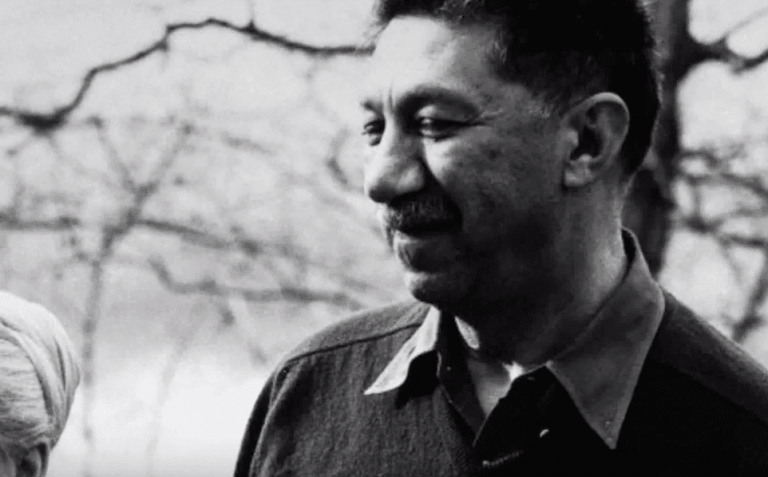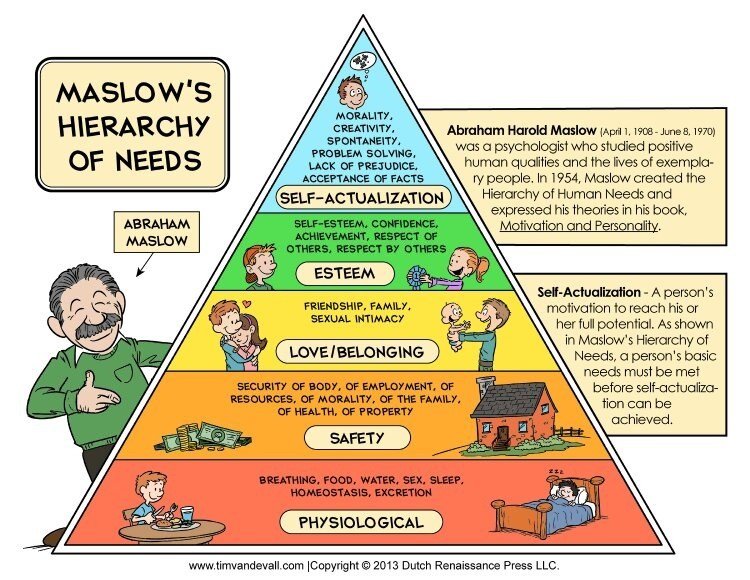
Whenever I see any person living a saintly life, I wonder what inspires them to be satiated even in a minimalistic life and how can they not have needs like the rest of us? This is not only about Buddha or Mahavira, but also about simple human beings, like you and me! The answer that satisfied my curiosity lies in Maslow’s theory of ‘Hierarchy of Needs’. This theory is amongst the 4 Content Models of Motivation.
Table of Contents
Maslow’s Theory of Needs
Abraham Maslow, an exponent of Positive Psychology, also wanted to understand how the ‘self-actualized’ people stand out in the crowd. To understand this, he applied the qualitative research technique of ‘biographical analysis’. He assessed the life of eighteen individuals whom he identified as self actualized through their biographies and other scripts. After evaluating these resources, he devised the motivational theory of ‘Maslow’s Pyramid of Human Needs’.
According to Maslow’s theory, there exists five types of needs that humans have and these make up the five levels of hierarchy which is denoted through a pyramidal structure. So, only when the needs at the bottom of this pyramid are fulfilled can the person climb higher to reach the much fantasized summit. Let us explore these five levels of Maslow’s pyramid.

The Hierarchy of Needs
Abraham Maslow’s humanistic theory consists of the following types of human needs.
- Physiological Needs
These needs lie at the bottom of Maslow’s hierarchy and are the basic needs for the very survival of human beings. Until the Physiological Needs are satisfied, a person cannot think of putting in efforts to fulfill any other needs. Thus, these are primary and essential for the optimal functioning of our body. Some examples of these needs are air, water, food, shelter, sex, clothing etc.
- Safety and Security Needs
After a person has secured the essential requirements for his survival, he goes forward to ensure safety and security in life. Thus arises the next need in Abraham Maslow’s theory of motivation. Now, a person can look for safety for his health, emotional stability, financial security and much more.
- Love and Belongingness Needs
The next step in Maslow’s hierarchy of needs gives rise to the need for connecting with people, forming effective interpersonal relationships and becoming part of certain social groups. At this point, a person might want to join certain organizations, make friends and/or find intimate partners.
- Esteem Needs
Subsequently, the need for respect and recognition emerge. According to Maslow, the esteem needs can occur for the following two reasons:
- Esteem for Self: This can include self-independence, mastery in certain skills, gaining dignity for self and desiring for particular achievements.
- Respect from Others: Here, the person wishes to leave his mindprints in front of others. Thus, he can want to reach a status level, become prestigious etc.
5. Self-Actualization Needs
What is self actualization in Maslow’s Hierarchy of Needs? At the top of the pyramid is this desire to realize our highest potential. It means that a person wants to avail oneself of his entire capacity to realize his potential. He wants to achieve everything that he can. The person has decoded the meaning of his life.

Types of Needs
These needs of Maslow’s theory of Motivation have also been categorized under different headers. These are:
- Basic, Psychological and Self-fulfillment Needs
The Psychological and Safety Needs combine together to form the ‘basic needs’. Once these basic needs are satiated, a person wants to move towards achieving his Psychological Needs, i.e. the need for love & belongingness and esteem.
After this, a person reaches the final step of Self-fulfillment needs. This comprises the need to realize our full potential and become self-actualized.
- Deficiency and Growth Needs
The first four steps in the hierarchy are the Deficiency or D-needs. The longer the time for which these are unmet, the more is the intensity of such needs. D-needs are what motivate people. The need for self-actualization is the Growth or Being Needs (B-needs). These are the needs that make a person willing to grow. Although Maslow has devised a hierarchy of needs, he says that the B-needs can always be felt irrespective of what other type of need in the pyramid you are aiming to fulfill.
Expansion of the Hierarchy
In 1970, Maslow proposed an expansion to the original pyramid with five tiers. He added three more types of needs to make the hierarchy of needs as follows:
- Physiological Needs
- Safety and Security Needs
- Love and Belongingness Needs
- Esteem Needs
- Cognitive Needs
- Aesthetic Needs
- Self Actualization Needs
- Transcendence Needs
Cognitive Needs include the human desire to acquire knowledge and meaning about the world. According to Maslow, this makes us curious and leads to exploration. Aesthetic Needs, on the other hand, represent the need for form and beauty.
Lastly, Transcendence Needs encompass the call for mystical experiences beyond the human self. This can take the form of religious beliefs, spiritual inclination, experiences through science or nature, sexual encounters, social services etc.
To understand more about your mind and find motivation, download the Evolve App now!

Karishma Golchha is pursuing Bachelor’s in Psychology. She is very keen about the human mind and looks forward to connect with you at golchha2002@gmail.com and evolve together!
